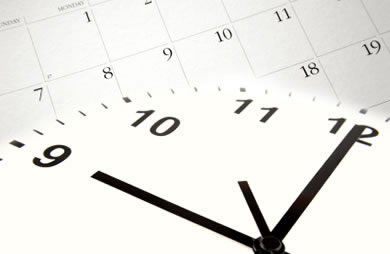.png)
Traveling and exploring are some of the best parts about summer, but walking long distances and standing (hello, airport security lines!) can take a toll on your feet. We spoke with Vionic Innovation Lab experts Dr. Jackie Sutera and Brian Hoke, DPT about how you can preserve the health of your feet while enjoying a jam-packed schedule of summer travel. .png) What kinds of shoes are best for travel, and what should you avoid? Dr. Jackie Sutera: Always think ahead--about what you'll wear to the airport, on the plane ride and when you arrive at your final destination. Chances are you'll be wearing the same shoe throughout that time, and it should be comfortable, supportive and adjustable. You'll be walking, standing and carrying bags, and then when you're flying, you'll want adjustable shoes for swollen feet because air pressure changes may cause swelling to your feet and legs. Avoid stiff, very flat, pointy, high or narrow shoes while traveling.  Brian Hoke, DPT: Avoid shoes that lack a good heel counter (the part that cradles the heel). A simple test is to squeeze the sides of the heel of the shoe. If you can make the sides touch easily, the shoe lacks the support you need to be on your feet for hours. Another important test is to make sure the shoe bends at the ball of the foot, ensuring range of motion. Put the shoe on end so the toe is touching a firm surface, then push down. The shoe should bend easily at the ball of the foot, but should not bend or collapse in the arch area. Are there foot stretches that you can do after a long day or while sitting on a plane? Brian Hoke, DPT: When we are sitting, the strong muscles of our lower leg and the smaller muscles in our foot are in a shortened position. Muscles that have spent hours in this state often feel stiff or even painful when we then rise to stand or walk. When the calf muscle is too tight, it can also cause our arch to flatten to compensate. Whenever possible, try to stand and walk around briefly to break up the time sitting. A good rule of thumb is to stand or walk for five to 10 minutes every hour. This also promotes circulation in the legs and is helpful in avoiding harmful blood clots that can form in vessels from long periods of uninterrupted sitting. When standing or walking is not practical, exercising the legs and feet in a sitting position can help. If there is enough room, stretch the legs out straight and then pull the feet and toes upward to feel a nice stretch in the calf. A fifteen second stretch done about five times is recommended. How can you care for sore feet? Dr. Jackie Sutera: Take a shower, draw a foot bath or apply a warm compress to your feet and calves. This loosens the muscles and tendons, easing tension. This is a perfect time to massage your arch and spaces between your metatarsals (toes). The arch should be massaged lengthwise and also from side to side. You can use your fingers or roll a golf ball under foot. Finish off by icing your feet for about 15 minutes using an ice pack or frozen water bottle. Brian Hoke, DPT: Another simple exercise that you can do in your hotel room is the heel-toe pump. While standing, put both feet flat on the ground, then raise up onto the balls of the feet. Then, reverse the motion and pull the toes up while you balance on the heels. Repeat this 30 times in each direction. This exercises the muscles and improves the blood flow. .png) What other common-sense tips can you offer? Dr. Jackie Sutera: Make sure that you are comfortable wearing the shoes you've chosen for travel. They shouldn't be right out of the box--this could cause blisters and achy feet. Never walk around the hotel, pool or shower barefoot. Wear shower shoes to protect yourself from warts, bacteria and fungus. Pack blister block, Band-Aids and antibiotic ointment just in case. Bring multiple pairs of tried, tested and comfortable shoes with you on your trip so that you have options for every occasion that you encounter throughout your travels! Check out Vionic's travel-ready comfortable sandals and best shoes for standing. Then, download our free e-book with exercises, stretches and tips for standing all day.  About Vionic Footwear Developed by Phillip Vasyli, renowned Australian podiatrist and founder of Orthaheel® Technology, Vionic shoes help restore natural foot function and relieve heel pain, promoting a more active lifestyle. Vionic’s footwear and orthotic inserts are also endorsed by noted integrative medicine expert, Dr. Andrew Weil. For additional information about Vionic, please visit VionicShoes.com. Continue your wellness journey with health tips and fitness advice from the world’s leading health experts, podiatrists and more. Sign up for Vionic’s free weekly e-newsletter. |
Popular EntriesMore From SparkPeople |














